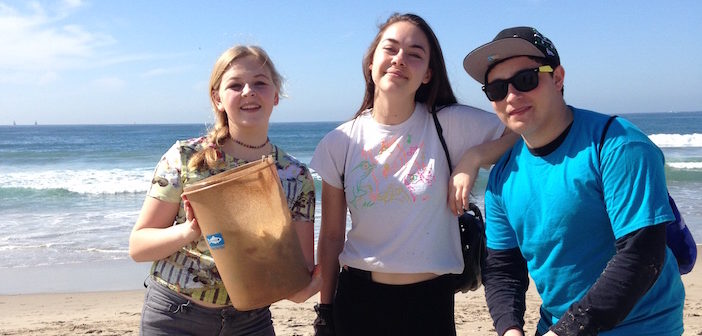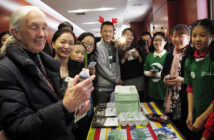Beach cleanups have been close to my heart since I was young. My mom, sister and I, our wet boogie boards and towels trailing behind us, always picked up three pieces of trash on the way to the car to “thank” the beach. As I got older I joined the phenomenon of organized beach cleanups. My school and the various honors groups within it endorsed them. Many of my peers were present, and being among these huge groups of people was invigorating.
But there was one problem. When you are one in thousands of people in one area, it can be hard to pick up trash. Time after time I found myself trudging over spotless sand and racing to pick up pieces of cardboard before other groups. I felt useless. Hosting solitary walks was no better. I was overwhelmed by the mountains of trash left, even after hours of hard work; and there was no one to encourage me. I lamented that my efforts were insignificant compared to the pileup of litter, which would only reappear the next day.
But like most Californians, I LOVE my beach! I wasn’t about to give up on it. So I looked around. I saw what brilliant organizations like Heal The Bay and Surfrider were doing to create dynamic beach cleanups. Using what I noted from their informal mentorship, along with personal experience, I created a three-step plan to amp my community beach cleanups. I hope you can use this to help bring more meaning to the service you do.
1. QUANTIFY YOUR WORK
Before leaving your event, see how much litter you’ve eliminated from our shores! Measuring the pounds of trash you’ve collected will leave an impression. Tallying how much of each item collected provides data regarding what is littering your beach. This is helpful in designating the focus of future beach cleanups and changing personal habits. You probably won’t want to use styrofoam takeout containers after seeing fifteen like it on the shore.
2. TELL US HOW IT IS
Leaving a clean beach makes people believe there is nothing left for them to fix. Hit them with some statistics! The United States uses enough straws to wrap around the world two-and-a-half times daily, and less than 7% of this is recycled! In 2015, Americans on average used 167 disposable water bottles and only recycled 23%! These plastic products are what are ending up on our beaches. This information can be painful, but let it remind people to continue to take action. Informational graphics, photos and colorful posters are fun and efficient ways to get your information out.
3. OFFER SOME SOLUTIONS
It’s almost unfair to present such a huge problem without some ways to solve it. You don’t want to leave people without hope. So add to your information graphic some future cleanup dates, places to buy reusable products or activism opportunities! You can also direct them to organizations like Roots & Shoots for further guidance regarding their volunteering efforts. Now that people are aware, it is vital that they be empowered.
Service is wonderful, but can be even more rewarding with the implementation of a few simple steps. Leave the beach knowing you’ve changed it for the better, and for some time to come!
If you organize a cleanup, be sure to report your project on rootsandshoots.org!






